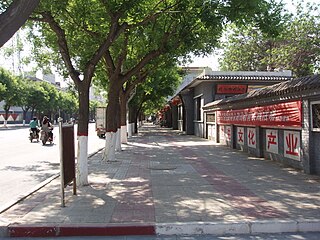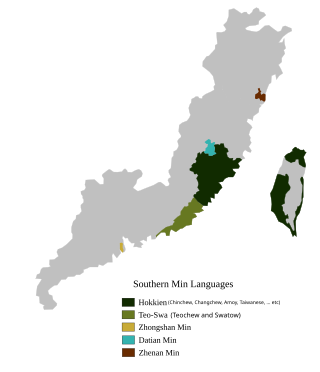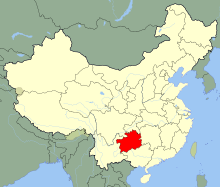
The history of China spans several millennia across a wide geographical area. Each region now considered part of the Chinese world has experienced periods of unity, fracture, prosperity, and strife. Chinese civilization first emerged in the Yellow River valley, which along with the Yangtze basin constitutes the geographic core of the Chinese cultural sphere. China maintains a rich diversity of ethnic and linguistic people groups. The traditional lens for viewing Chinese history is the dynastic cycle: imperial dynasties rise and fall, and are ascribed certain achievements. Throughout pervades the narrative that Chinese civilization can be traced as an unbroken thread many thousands of years into the past, making it one of the cradles of civilization. At various times, states representative of a dominant Chinese culture have directly controlled areas stretching as far west as the Tian Shan, the Tarim Basin, and the Himalayas, as far north as the Sayan Mountains, and as far south as the delta of the Red River.

Jiankang, or Jianye, as it was originally called, was the capital city of the Eastern Wu, the Eastern Jin dynasty and the Southern Dynasties (420–552), including the Chen dynasty. Its walls are extant as ruins in the modern municipal region of Nanjing. Jiankang was an important city of the Song dynasty. Its name was changed to Nanjing during the Ming dynasty.

The Zhuang are a Tai-speaking ethnic group who mostly live in the Guangxi Zhuang Autonomous Region in Southern China. Some also live in the Yunnan, Guangdong, Guizhou, and Hunan provinces. They form one of the 56 ethnic groups officially recognized by the People's Republic of China. With the Bouyei, Nùng, Tày, and other Northern Tai speakers, they are sometimes known as the Rau or Rao people. Their population, estimated at 18 million people, makes them the largest minority in China.

Song is the pinyin transliteration of the Chinese family name 宋. It is transliterated as Sung in Wade-Giles, and Soong is also a common transliteration. In addition to being a common surname, it is also the name of a Chinese dynasty, the Song dynasty, written with the same character.

Chen Zaidao was a Chinese general in the People's Liberation Army, who commanded the Wuhan Military Region from 1954 to 1967. He is most noted for having arrested pro-Mao Xie Fuzhi and Wang Li during the Wuhan Incident in July 1967. He was promptly dismissed after the incident, but was rehabilitated in 1972 and entered the Central Committee of the Chinese Communist Party in 1978.

Xia County or Xiaxian is a county in the southwest of Shanxi province, People's Republic of China, bordering Henan province to the southeast. It is under the jurisdiction of Yuncheng City.
Shiping County is a county in the Honghe Hani and Yi Autonomous Prefecture in the southern part of the Yunnan province, China. It is located about 240 km (150 mi) from Kunming, the provincial capital. The county has a population of approximately 280,000 and its area is 3,037 km2 (1,173 sq mi).
Champa rice is a quick-maturing, drought resistant rice that can allow two harvests of sixty days each per growing season. Champa rice is from the aus sub-population, which shares similarities with both the japonica and the indica rice varieties. Likely originating from Eastern India, Champa rice was introduced from the Champa Kingdom into Song China in the 11th century. Champa rice was then sent to Song China in the 11th century as a tribute gift from Champa during the reign of Emperor Zhenzong of Song. Song dynasty officials gave the quick-growing champa rice to peasants across China in order to boost their crop yields, and its rapid growth time was crucial in feeding the burgeoning Chinese population of over 100 million.

Huangfu Mi (215–282), courtesy name Shi'an, was a Chinese physician, essayist, historian, poet, and writer who lived through the late Eastern Han dynasty, Three Kingdoms period and early Western Jin dynasty. He was born in a poor farming family in present-day Sanli village, Chaona, Pingliang, despite being a great-grandson of the famous general Huangfu Song, via Song's son Huangfu Shuxian.
The Same Song is the flagship program of the China Central Television music channel. It is usually recorded in a different outside broadcast location each week. The theme song with the same name is usually sung by Mao Amin at the end of the program.
Taiwan is Good is a patriotic song of the Republic of China (ROC), which its tune was originally from the indigenous songs of Amis people and Paiwan people in Taitung County area. It is about the ROC government and people's desire to retake Mainland China from the Chinese Communist forces. It also celebrates the development of modern Taiwan, which is considered one province of the whole ROC. This is also one of the very few ROC political songs that used Taiwan as main themes.
The Military Anthem of the Eighth Route Army is a patriotic song of the People's Republic of China. Since the Eighth Route Army was a special route army within the National Revolutionary Army of the Republic of China, it also can be considered as a patriotic song of the Republic of China. This song is one of the six songs comprising The Grand Chorus of the Eighth Route Army Chinese: 八路軍大合唱, Chinese: Bālùjūn Dàhéchàng), all words by Gong Mu, music by Zheng Lücheng.

The Military Anthem of the People's Liberation Army, also known as the March of the Chinese People's Liberation Army, is a patriotic song of the People's Republic of China. The song was written by Zhang Yongnian and composed by Zheng Lücheng.

Wuqiang County is a county in the southeast-central part of Hebei province, China. It is under the administration of the prefecture-level city of Hengshui, with a population of 210,000 residing in an area of 442 km2 (171 sq mi). Both China National Highway 307 and G1811 Huanghua–Shijiazhuang Expressway pass through the county.

Song Shilun, né Song Jiyao, alternative name Song Zhiguang (宋之光), was a general of the People's Liberation Army of the People's Republic of China. Song had graduated from Whampoa Military Academy and participated in the Long March, Anti-Japanese war, Chinese Civil War and Korean War, respectively. He died September 17, 1991, in Shanghai.
Zhongshan Min, known as Cunhua by its speakers, are three Min Chinese dialect islands in the Zhongshan region of the southern Chinese province of Guangdong. The Zhongshan Min people settled in the region from Fujian Province as early as the Northern Song dynasty period (1023–1031). The three dialects are:

Zhenan Min, is a Min Nan Chinese language spoken in the vicinity of Wenzhou, in the southeast of Zhejiang province.

Daming County is a county under the jurisdiction of Handan City in far southern Hebei Province, China. It was formerly one of the capitals of the Northern Song.
Events in the year 1959 in China. The country had an estimated population of 665 million people.

V-01 is a protein subunit COVID-19 vaccine candidate developed by a subsidiary of Livzon Pharmaceutical Group Inc.















